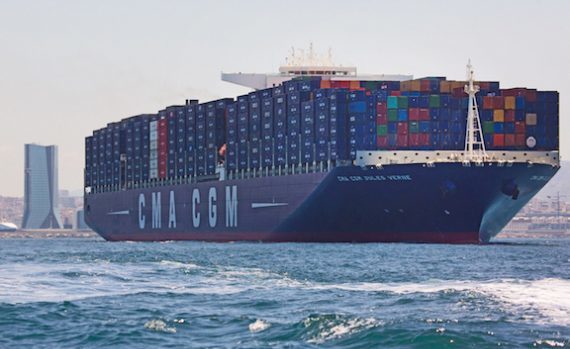Ultra large container vessel battle is over: Drewry

Major lines have sated their appetite for ultra large container vessels, with UK consultants Drewry slashing its projected boxship order forecasts from 2020 onwards.
The latest edition of Drewry’s Container Forecaster looks at how top lines are increasingly focused on spending to become all-round supply chain companies rather than beefing up their fleets.
“We believe that the industry’s supply-demand balance will benefit from a reduced appetite for ultra large container vessels (ULCVs) among the major carriers, some of which now have their eyes fixed on a bigger prize of becoming global logistics integrators. Aside from feeder ship replenishment, there has been no reaction from other lines to HMM’s mega-ship order and as such we have greatly reduced our projected new orders for 2020 onwards,” said Simon Heaney, senior manager, container research at Drewry and editor of the Container Forecaster.
“This subsequently feeds into a much brighter supply-demand index forecast for carriers through 2022, although the index is still expected to remain below the important 100 marker, indicative of a tighter but still over-supplied market. Ultimately, we believe that these adjustments on the supply side will be sufficient to cushion the blow from slowing demand growth and will contribute to better freight rates and profits,” Heaney added.
Drewry is predicting global boxport growth of 4% this year. It notes that more original 2018-19 newbuilds have been pushed out to 2020. Combined with an expected increase in demolitions the net addition to the fleet is expected to be only half that of 2018, leading to a fleet growth rate of just 2.5%.
Additionally, supply-side moves associated with the IMO’s upcoming 2020 low sulphur fuel regulation have the potential to curb capacity, at least on a temporary basis. A growing tendency towards retrofitting scrubbers could see a number of ships taken out of service for a number of weeks at a time, while more generally Drewry expects shipowners to idle and eventually scrap more older and uneconomic ships before the January 1 deadline. Wider use of slow steaming will also help to absorb new capacity and reduce the often negative influence of the cascade on the supply-demand balance, Drewry stated.
“Last year was one of the most unpredictable the container shipping industry has faced, and this year is likely to be similarly volatile with question marks still hanging over the US-China trade war and new fuel regulations. However, despite being dogged by uncertainty, Drewry is predicting another solid year for the market,” Heaney predicted.
